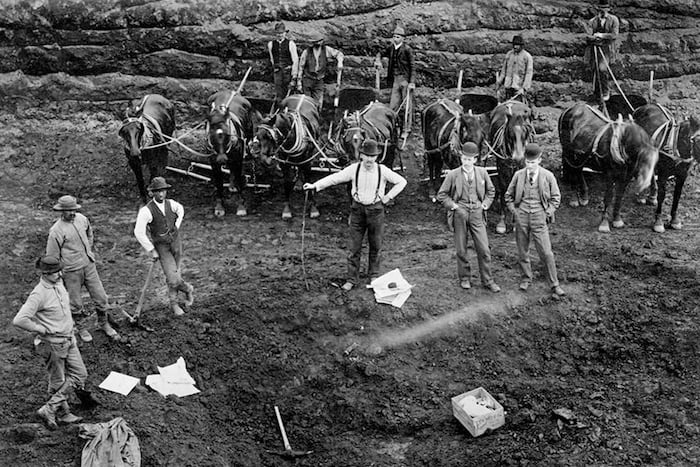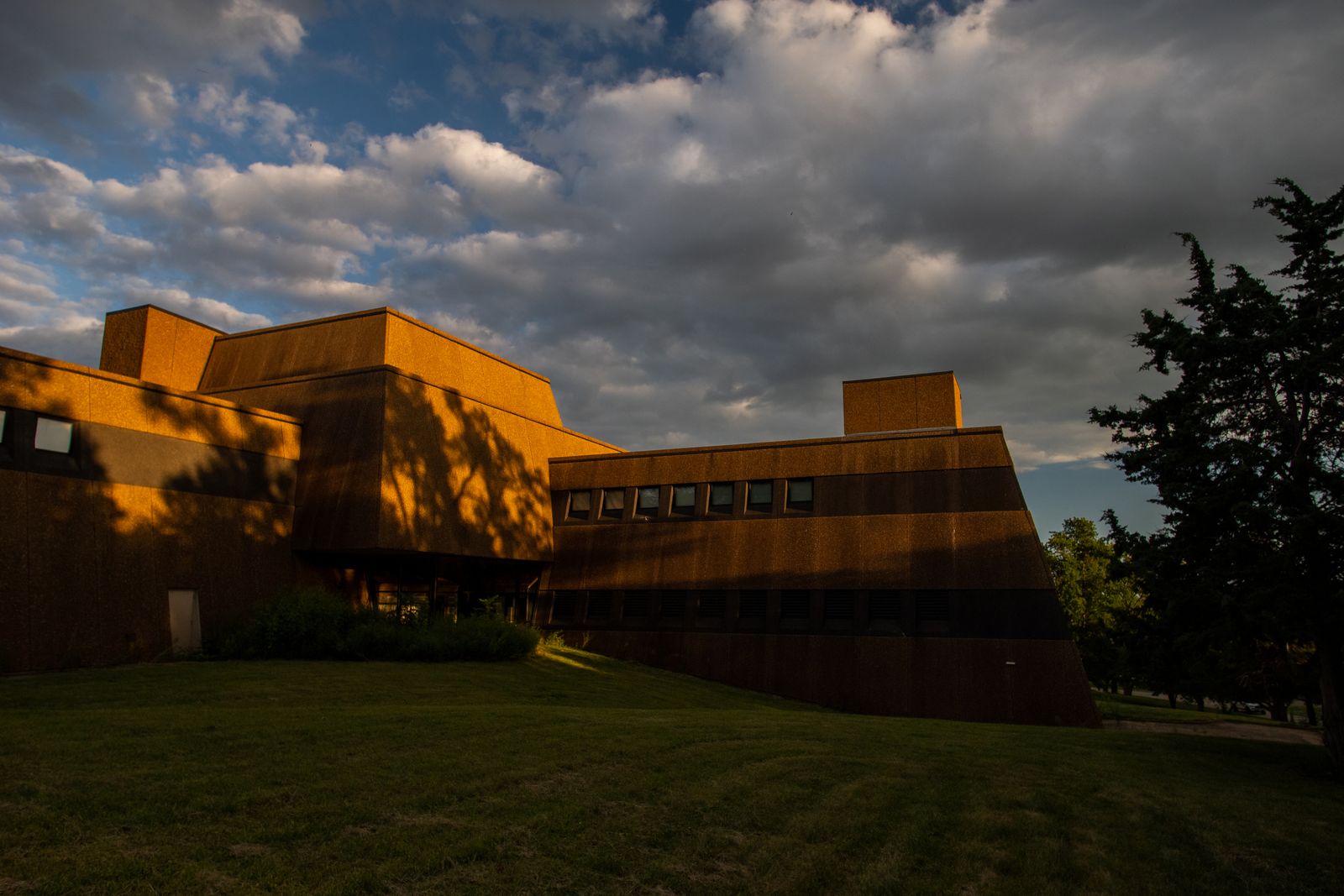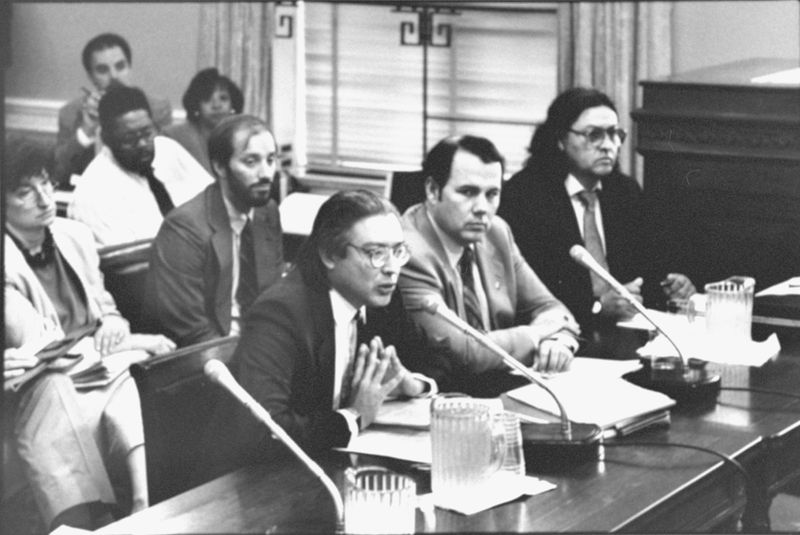Florida
Institutions reported making 25% of the more than 7,300 Native American remains taken from Florida available for return to tribes under NAGPRA.
There are 20 institutions located in Florida that reported Native American remains taken from across the country.
| Institution | Remains Not Made Available for Return | Remains Made Available for Return | % of Remains Made Available for Return |
|---|---|---|---|
| University of Florida, Florida Museum of Natural History | 2,620 | 377 | 13% |
| Florida Department of State | 1,448 | 79 | 5% |
| Florida State University, Department of Anthropology | 508 | 92 | 15% |
| University of South Florida | 142 | 100 | 41% |
| Graves Museum of Archaeology and Natural History | 131 | 0 | 0% |
| Sarasota County History Center | 93 | 0 | 0% |
| U.S. Department of the Interior | 89 | 114 | 56% |
| University of Miami | 45 | 0 | 0% |
| University of West Florida, Archaeology Institute | 14 | 0 | 0% |
| U.S. Department of Agriculture | 10 | 8 | 44% |
| Phillip and Patricia Frost Museum of Science | 9 | 0 | 0% |
| Loxahatchee Historical Society, Inc. | 3 | 0 | 0% |
| U.S. Department of Defense | 2 | 187 | 99% |
| Miami-Dade County | 1 | 0 | 0% |
| Bishop Museum of Science and Nature | 0 | 68 | 100% |
| Florida Atlantic University | 0 | 336 | 100% |
| Florida Dept. of Transportation | 0 | 9 | 100% |
| HistoryMiami Museum | 0 | 188 | 100% |
| Safety Harbor Museum of Natural History | 0 | 1 | 100% |
| Seminole Tribe of Florida | 0 | 4 | 100% |
There are 80 institutions that reported Native American remains taken from Florida.
| Institution | Remains Not Made Available for Return | Remains Made Available for Return | % of Remains Made Available for Return |
|---|---|---|---|
| University of Florida, Florida Museum of Natural History | 2,485 | 377 | 13% |
| Florida Department of State | 1,418 | 78 | 5% |
| Harvard University | 540 | 2 | 0% |
| Florida State University, Department of Anthropology | 323 | 92 | 22% |
| Graves Museum of Archaeology and Natural History | 130 | 0 | 0% |
| University of Pennsylvania Museum of Archaeology and Anthropology | 108 | 19 | 15% |
| Sarasota County History Center | 93 | 0 | 0% |
| American Museum of Natural History | 89 | 0 | 0% |
| Yale University, Peabody Museum of Natural History | 82 | 0 | 0% |
| University of Miami | 45 | 0 | 0% |
| Milwaukee Public Museum | 26 | 0 | 0% |
| U.S. Department of Defense | 25 | 177 | 88% |
| Wagner Free Institute of Science | 23 | 0 | 0% |
| Nassau County Department of Parks and Recreation | 19 | 0 | 0% |
| University of West Florida, Archaeology Institute | 14 | 0 | 0% |
| U.S. Department of the Interior | 12 | 111 | 90% |
| U.S. Department of Agriculture | 10 | 8 | 44% |
| University of Michigan Museum of Anthropology | 10 | 0 | 0% |
| Wisconsin Historical Society | 10 | 0 | 0% |
| Dayton Museum of Natural History | 9 | 0 | 0% |
| Phillip and Patricia Frost Museum of Science | 9 | 0 | 0% |
| Texas State University | 9 | 0 | 0% |
| Ohio History Connection (formerly the Ohio Historical Society) | 7 | 0 | 0% |
| Dartmouth College, Hood Museum of Art | 6 | 1 | 14% |
| New York State Museum | 5 | 0 | 0% |
| Spratt-Mead Museum | 5 | 0 | 0% |
| Rochester Museum and Science Center | 4 | 0 | 0% |
| University of New Mexico, Maxwell Museum of Anthropology | 3 | 0 | 0% |
| University of Tennessee, Knoxville | 3 | 0 | 0% |
| Buffalo State College | 2 | 0 | 0% |
| Carnegie Museum of Natural History | 2 | 0 | 0% |
| Columbus Museum | 2 | 0 | 0% |
| Hastings Museum | 2 | 0 | 0% |
| Loxahatchee Historical Society, Inc. | 2 | 0 | 0% |
| University of Alabama Museums | 2 | 0 | 0% |
| University of Nebraska State Museum | 2 | 0 | 0% |
| University of South Alabama, Center for Archaeological Studies | 2 | 0 | 0% |
| Buffalo Museum of Science | 1 | 0 | 0% |
| Case Western Reserve University | 1 | 0 | 0% |
| Cleveland Museum of Natural History | 1 | 0 | 0% |
| Earlham College | 1 | 0 | 0% |
| Fairbanks Museum and Planetarium | 1 | 0 | 0% |
| Indiana University | 1 | 0 | 0% |
| Mercyhurst Univ. | 1 | 0 | 0% |
| Miami-Dade County | 1 | 0 | 0% |
| Peabody Essex Museum | 1 | 0 | 0% |
| Robert S. Peabody Institute of Archaeology, Phillips Academy | 1 | 14 | 93% |
| Rutgers University, Zimmerli Art Museum | 1 | 0 | 0% |
| Stamford Museum and Nature Center | 1 | 8 | 89% |
| Staten Island Institute of Arts and Sciences | 1 | 0 | 0% |
| University of Georgia, Department of Anthropology | 1 | 0 | 0% |
| University of Illinois, Urbana-Champaign | 1 | 0 | 0% |
| University of Kansas | 1 | 1 | 50% |
| University of South Florida | 1 | 97 | 99% |
| Virginia Department of Historic Resources | 1 | 0 | 0% |
| West Virginia Department of Arts, Culture and History | 1 | 0 | 0% |
| Amherst College, Beneski Museum of Natural History | 0 | 2 | 100% |
| Beloit College, Logan Museum of Anthropology | 0 | 43 | 100% |
| Bishop Museum of Science and Nature | 0 | 68 | 100% |
| Boston University | 0 | 1 | 100% |
| Brown University, Haffenreffer Museum of Anthropology | 0 | 5 | 100% |
| Bruce Museum | 0 | 1 | 100% |
| Denver Museum of Nature and Science | 0 | 4 | 100% |
| Field Museum | 0 | 2 | 100% |
| Florida Atlantic University | 0 | 336 | 100% |
| Florida Dept. of Transportation | 0 | 9 | 100% |
| Grand Rapids Public Museum | 0 | 4 | 100% |
| HistoryMiami Museum | 0 | 185 | 100% |
| Michigan State University | 0 | 2 | 100% |
| New York University, College of Dentistry | 0 | 9 | 100% |
| Portland State University | 0 | 6 | 100% |
| Robbins Museum of Archaeology | 0 | 1 | 100% |
| Safety Harbor Museum of Natural History | 0 | 1 | 100% |
| Seminole Tribe of Florida | 0 | 4 | 100% |
| Springfield Science Museum | 0 | 15 | 100% |
| Univ. of Florida, Florida Museum of Natural History + Florida Dept. of State | 0 | 25 | 100% |
| University of Iowa, Office of the State Archaeologist | 0 | 35 | 100% |
| University of Maine | 0 | 3 | 100% |
| University of Massachusetts, Amherst, Department of Anthropology | 0 | 65 | 100% |
| Wistar Institute | 0 | 1 | 100% |
Institutions made Native American remains taken from Florida available for return to 16 tribes.
| Tribe | Remains Made Available for Return to Tribe |
|---|---|
| Seminole Tribe of Florida | 1,213 |
| Miccosukee Tribe of Indians | 508 |
| The Seminole Nation of Oklahoma | 479 |
| Institution could not determine a culturally affiliated tribe and remains were transferred or reinterred according to state or other law | 366 |
| Mississippi Band of Choctaw Indians | 278 |
| Muscogee (Creek) Nation | 248 |
| Thlopthlocco Tribal Town | 195 |
| Poarch Band of Creek Indians | 175 |
| Choctaw Nation of Oklahoma | 108 |
| Alabama-Quassarte Tribal Town, Oklahoma | 104 |
| Kialegee Tribal Town | 104 |
| Tunica-Biloxi Indian Tribe | 100 |
| Jena Band of Choctaw Indians | 82 |
| Alabama-Coushatta Tribe of Texas | 26 |
| Coushatta Tribe of Louisiana | 26 |
| Lineal Descendant | 1 |
Institutions reported Native American remains taken from 60 counties in Florida.
| County | Remains Taken From County Not Made Available for Return | Remains Made Available for Return | % of Remains Made Available for Return |
|---|---|---|---|
| Sarasota County | 707 | 14 | 2% |
| Brevard County | 620 | 79 | 11% |
| Volusia County | 417 | 39 | 9% |
| Glades County | 344 | 5 | 1% |
| Leon County | 289 | 0 | 0% |
| Pinellas County | 289 | 33 | 10% |
| Nassau County | 215 | 4 | 2% |
| Lee County | 205 | 20 | 9% |
| Duval County | 196 | 3 | 2% |
| Citrus County | 186 | 382 | 67% |
| Alachua County | 170 | 3 | 2% |
| Manatee County | 156 | 20 | 11% |
| Levy County | 154 | 29 | 16% |
| Collier County | 128 | 38 | 23% |
| Martin County | 128 | 32 | 20% |
| Columbia County | 107 | 0 | 0% |
| Broward County | 106 | 22 | 17% |
| Dixie County | 95 | 1 | 1% |
| Hernando County | 91 | 0 | 0% |
| Orange County | 83 | 10 | 11% |
| Lake County | 69 | 1 | 1% |
| Charlotte County | 57 | 0 | 0% |
| Palm Beach County | 54 | 231 | 81% |
| Indian River County | 50 | 0 | 0% |
| Hillsborough County | 34 | 43 | 56% |
| Putnam County | 34 | 1 | 3% |
| St. Johns County | 33 | 14 | 30% |
| Taylor County | 26 | 0 | 0% |
| Seminole County | 23 | 3 | 12% |
| Flagler County | 22 | 0 | 0% |
| Pasco County | 22 | 57 | 72% |
| Miami-Dade County | 20 | 200 | 91% |
| Franklin County | 19 | 0 | 0% |
| Marion County | 18 | 10 | 36% |
| Wakulla County | 17 | 19 | 53% |
| Bay County | 16 | 174 | 92% |
| Highlands County | 16 | 1 | 6% |
| Jefferson County | 15 | 4 | 21% |
| Santa Rosa County | 15 | 11 | 42% |
| St. Lucie County | 13 | 1 | 7% |
| Jackson County | 11 | 2 | 15% |
| Okaloosa County | 11 | 78 | 88% |
| Escambia County | 10 | 3 | 23% |
| Walton County | 9 | 9 | 50% |
| Hendry County | 5 | 3 | 38% |
| Monroe County | 5 | 29 | 85% |
| Gulf County | 4 | 0 | 0% |
| Okeechobee County | 4 | 2 | 33% |
| Polk County | 3 | 0 | 0% |
| Hardee County | 2 | 37 | 95% |
| Suwannee County | 2 | 0 | 0% |
| Gadsden County | 1 | 16 | 94% |
| Lafayette County | 1 | 0 | 0% |
| Liberty County | 1 | 0 | 0% |
| Madison County | 1 | 0 | 0% |
| Sumter County | 1 | 3 | 75% |
| Union County | 1 | 0 | 0% |
| Calhoun County | 0 | 6 | 100% |
| Clay County | 0 | 1 | 100% |
| Osceola County | 0 | 6 | 100% |
Know how an institution is handling repatriation? Have a personal story to share? We'd like to hear from you.
Watch an informational webinar with our reporters.
This tool presents a dataset maintained by the National Park Service containing all the Native American human remains and associated funerary objects that institutions have reported to the federal government under the Native American Graves Protection and Repatriation Act. The dataset includes information about the state and county where remains and objects were taken from, which institutions hold them and whether they have been made available for return to tribes.
The data is self-reported by institutions. The amount of unrepatriated Native American remains reported by institutions is a minimum estimate of individuals and institutions frequently adjust these numbers when they reinventory groups of remains. Some institutions that are subject to NAGPRA have also entirely failed to report the remains in their possession. As a result, the numbers provided are best taken as estimates. The actual number and geographic scope of what’s held by publicly funded institutions is larger than what is presently documented.
ProPublica supplemented this dataset with information about cultural affiliation and disposition to specific tribes by systematically parsing the text of Notices of Inventory Completion published in the Federal Register. An additional dataset from the Department of Housing and Urban Development, the Tribal Directory Assessment Tool, was used for the section on remains not made available for return from counties that each tribe has indicated interest in to the federal government.
Institution location and tribal headquarters location information was provided by National NAGPRA. The location of some groups that are not federally recognized was provided through research by ProPublica.
Institutions that are part of a larger entity are grouped. (For example, the Mesa Verde National Park is part of the U.S. Department of the Interior.)
Institutions that have not submitted information to the federal government are not listed. The Smithsonian Institution is not listed because its repatriation process falls under the National Museum of the American Indian Act and it is not required to publicly report its holdings with the same detail as institutions subject to NAGPRA.
If you work for an institution and would like to provide comment on your institution’s repatriation efforts, please email [email protected]. If you think the data is incorrect or have a data request, please get in touch. We are aware of some issues with the accuracy of location information and tribes mistakenly being identified for disposition of Native American remains in published notices.
If you want to share something else with ProPublica, we’d like to hear from you.
If you have questions about implementing or complying with the Native American Graves Protection and Repatriation Act, get in touch with National NAGPRA or the NAGPRA Community of Practice.
We use the word “tribes” to refer to all groups that institutions made Native American remains available to under NAGPRA. This includes tribes, nations, bands, pueblos, communities, Native Alaskan villages, Native Hawaiian organizations and non-federally recognized groups.
Data sources from Department of the Interior, National Park Service, National NAGPRA Program, the Federal Register, Department of Housing and Development, Tribal Directory Assessment Tool


